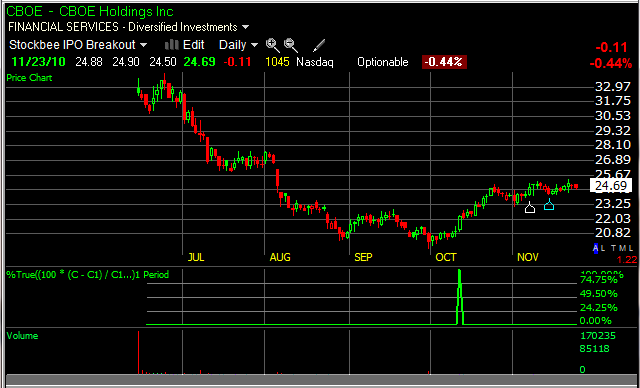In my beginning trading years my account graph looked like the second line and now it looks like the top line. I would run up account big and then end up giving up 40 to 70% open profit before realizing trend change . It is very difficult way to trade emotionally and in real term because you need to make triple digit gains to recover from deep drawdowns.
Loss of account (%) Gain to recover (%)
5 5.3
10 11.1
15 17.6
20 25.0
25 33.3
30 42.9
35 53.8
40 66.7
45 81.8
50 100.0
55 122.0
60 150.0
This was the same problem I faced in the beginning years.Many times I would run my account up double digit in few weeks and then end up giving back that profit. I did some serious thinking about this issue and retooled everything. The key things which I changed was:
+Developed Market Monitor which tells you risky zones. Bulk of the losses happen when there is a regime change. MM shows you such zones.
+Started looking for shorter swings. Earlier I would sit through correction thinking the stock had more upside. Now I get out before correction develops.
+Partial profits. This most swing traders will tell you is key. Ultimately all swing traders arrive at this solution after trial and error. It is not optimal solution when people back test it, but it very practical solution. By selling in units you reduce chances of giving back profits. (I know it reduces overall trade profit, hey but objective is to make money not to adhere to some back test theory)
+Setting profit target. I am always thinking of how much the stock will move when I am entering. To arrive at profit targets I keep looking at MM data . It tells you what are possible targets on stock. It also tells you when you should get out. If probability of stock making 25% or 50% move in the market in a month is known to you through MM history then you know how to manage that trade and exit at right time.
+Vary risk. Some ideas are better than others and having the guts to bet big on them can help a lot. Most ideas I bet .5 to 1% but once in a while you see a compelling trade where all ducks are lined up and then I bet big. But those big bets are not wild bets, but based on some logic. If I am up 75% plus for a year then betting 5% on a high conviction idea is not going to break the bank. Typically I make big bets only once I am up 20% plus for a year. So If I am up 20% plus I don't mind betting 2% on a idea. At 50% profit I do not mind betting 5% on a idea.
+If a stock dos not work as anticipated after entry get out. No matter how good the story is if it does not act right get out. Seldom allow stock to hit stop. A good breakout has immediate follow through. If you have done a good job of selecting your stocks to trade and done good job of identifying good buy point then that trade should work immediately.
+Everyday think profit protection once up 10% plus in a month. If I have big profits I have trained myself to not start thinking of buying Caribbean island but to start thinking of how to protect gains. The objective of trading for me is to make money and keep the profit.
+When not sure sell first and ask questions later. Do not sit like a dead duck.
These are some of the things which have helped.
But I am also human and sometime there is loss of situational awareness and end up giving up some open profit or falling in love with a stock and not following my own rules. If you see this year all the big loss making trades have been on stocks which I had higher conviction and did not sell at proper sell point but only in two trades the losses exceeded more than 10% and the max loss on any trade was 12.28%. On overwhelming number of losing trades the losses were below 5%. Cutting losses quickly is the cornerstone of my method and thinking. 10% loss is my uncle point.
One of the things about trading is there are no perfect solutions to your problem but one can find workable solutions. And real trading is messy. That is why many traders do not show their real time trades and P&L. While most people are looking for perfect answers. They are looking for method that will only have profitable trading. That will have perfect stops. And so on, but that is not how real discretionary traders operate.
Your first goal in trading should be to manage drawdowns. You should constantly work to have small drawdowns, yet have explosive returns. That requires some serious thinking.








